完璧なバターミルクフライドチキンの技法
23 分 読み取り 酸味のあるバターミルク浸漬で極上にジューシーなフライドチキンを究め、賢い味付けと鋳鉄鍋の技術を組み合わせる—さらに油温のコツ、クリスプさの秘密、南部の台所文化に関する知見も紹介。 10月 12, 2025 09:09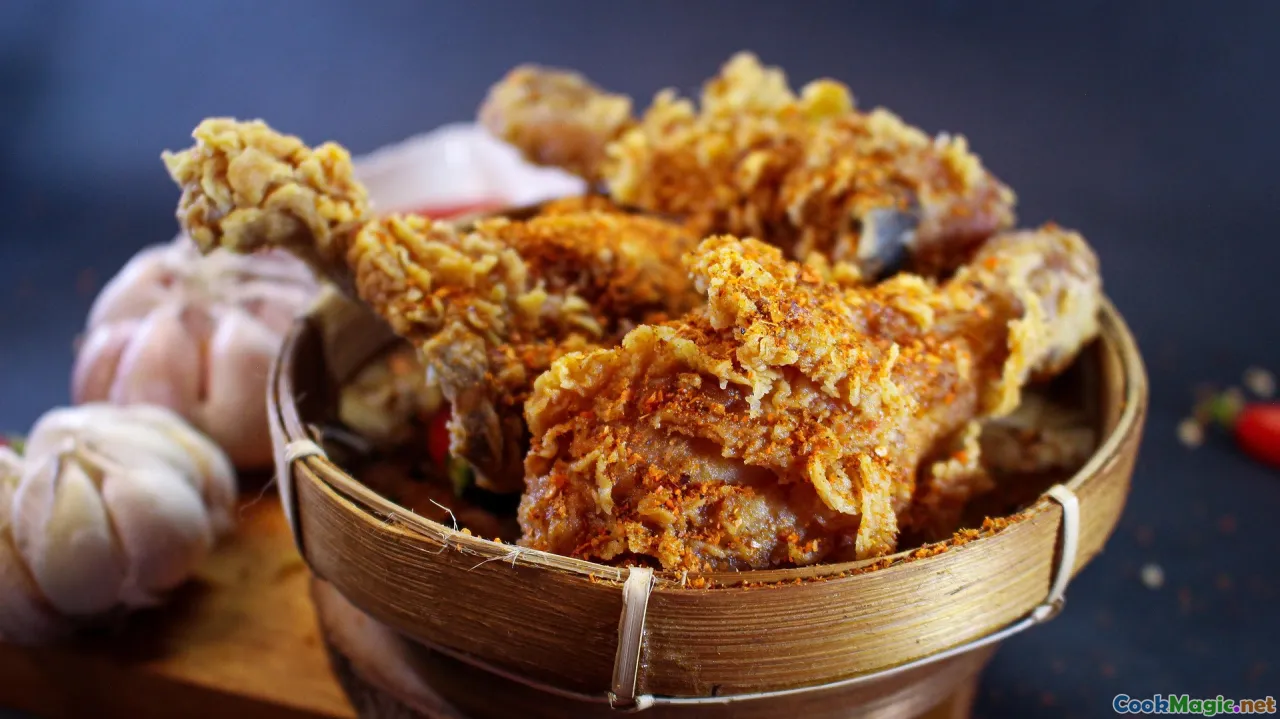
私が初めて祖母が鶏を揚げるのを見たとき、満たす食事と体を支える食事の違いを学んだ。フライパンは黒く、油が馴染んだ彗星のようで、家はローストしたトウモロコシの香りと温かな胡椒、そして約束の香りに満ちていた。太ももが熱いラードに沈んでいくときの静かなシューという音が今も耳に残っている。日曜日で、最初のバッチが茶色い紙の上で冷める瞬間には、隣人が不意に現れることを意味していた。彼女は鶏を傾けて聴く。鳥と鍋を信頼する忍耐強さで、ひっくり返すタイミング、塩を振るタイミング、待つべきときを教えてくれると感じていた。彼女の手の中で、バターミルクフライドチキンは料理というよりも言語のような存在になった。
南部の台所では、その言語は生きて進化している。それは具体的だ。フライパンの重さ、油の匂い、スプーンが小麦粉のボウルに刻む溝のあり方。それはまた親密で広大でもある。伝承されたレシピであり、共有された記憶であり、熱を通じて語られる地域の歴史だ。これが完璧なバターミルクフライドチキンの技である—味わい方、手触り、起源、そして敬意をもって次へ受け継ぐ方法。
鍋の中の遺産

南部のフライドチキンは、サクサク感と香辛料だけの話ではなく、編まれた物語だ。スコットランド系移民は脂肪で鶏をパンフライする技法を持ち込んだ。西アフリカ人は広範な香辛料の才能、 deep culinary knowledge、そして抑圧下の機知をもたらした。奴隷制度下の黒人料理人たちがこれらの糸を編み合わせ、巧みな味付けと揚げ技で実用的な方法を文化的の象徴へと変えた。ジム・クロウ時代には、フライドチキンは運びやすく、冷めても食べられた。危険な道を行く黒人家族にとって重要だった。その携行性は、日曜の定番を糧としてだけでなく、聖域へと変えた。
If you walk into Willie Mae’s Scotch House in New Orleans, the evidence is audible: a gentle crack as your teeth break the lacquered crust, then the steamy billow of seasoned juice. Head to Gus’s in Mason, Tennessee, and you’ll meet a cayenne-warm, copper-tinted crust served with white bread and slaw—fire and comfort in one bite. In Nashville at Prince’s, hot chicken is a dare and a love letter, a slick of spiced paste blooming red against a coarse, craggy coat. These places don’t just serve chicken; they serve memory. Buttermilk enters this story later, championed by home cooks who knew the power of thrift. When you churn butter, you’re left with a tangy, thin dairy that tenderizes and seasons like a kindly aunt who also packs a switch. The lactic tang loves chicken, coaxing it tender without turning it mushy. Many of us remember a mason jar of buttermilk on the top shelf of the fridge, a curtain of condensation running down the side while a hen soaks up a quiet miracle overnight.
バターミルクが意味するもの—科学と魂

If fried chicken were a string quartet, buttermilk would be the viola—subtle, supportive, and essential to harmony. Its acidity, generally around pH 4.5, helps break down some proteins on the surface of the chicken, increasing water-holding capacity so the meat stays juicy. The calcium in buttermilk also activates enzymes in the chicken that tenderize without the harshness of stronger acids like lemon or vinegar. The lactose and milk solids take the heat well, participating in the Maillard reaction to deepen color and flavor. Salt is the co-conspirator. For true seasoning, salt must penetrate. Dissolving salt into your buttermilk brine lets it migrate past the surface, seasoning the meat all the way to the bone. Aim for roughly 1.5–2 percent salt by weight of the chicken. If your chicken weighs 1.5 kilograms, that is 22–30 grams of salt. Use scales when you can, but if you must measure by spoon, understand the brand differences: Diamond Crystal kosher salt is coarser and lighter by volume than Morton’s. A tablespoon of Diamond Crystal is about 10 grams; Morton’s is about 18 grams. Buttermilk also cares how long you linger. A short soak—4 to 6 hours—adds brightness and tenderness. Overnight, 12 to 24 hours, gets you full flavor and a plumper, juicier bite. Beyond 24, you risk a mushy exterior. Somewhere between a Sunday nap and a good night’s sleep is your sweet spot. The soul side is just as real. Buttermilk tastes like something older than scale-precise cooking, like a whisper from a cook who never wrote things down but could season a skillet by instinct. You can smell its tang when you open the bowl. When you pull the chicken from its bath, it clings in a velvety coat—already half a promise.
鳥と部位の選び方

Start with a good bird. A smaller chicken—around 3.5 to 4 pounds—delivers the juiciest fried pieces. Larger birds work, but their breasts are prone to drying before the bone-in thighs finish. If you can, buy a whole bird and cut it yourself. You will learn the anatomy by feel, and you will ensure even sizing. Pieces to consider:
- Thighs, bone-in, skin-on: deep chicken flavor, forgiving in the oil, happiest at a higher final temp (175–185°F) for a silkier texture.
- Drumsticks: classic picnic piece, easy to handle, cooks similarly to thighs.
- Wings: party pleasers, cook fast, crisp like a dream.
- Breasts, bone-in and skin-on: juicy if handled right; target 160–165°F to avoid chalkiness. Smart cooks trim excess skin flaps to avoid greasy pockets and expose more surface for crust. Patting the chicken dry before brining helps the buttermilk cling and avoids diluting your brine. What about air-chilled versus water-chilled chicken? Air-chilled birds typically retain less excess water, which means less spatter and better browning. They also tend to have firmer texture. If you can find one, it is worth the slight upcharge.
必携の道具:鋳鉄鍋、温度計、クールラック

Fried chicken rewards simple, sturdy tools. At minimum:
- A heavy 12-inch cast iron skillet or a Dutch oven: cast iron’s heat retention keeps your oil temperature steadier when you add cold chicken.
- A clip-on or instant-read thermometer: your oil temperature should be consistent; your chicken’s internal temperature matters most.
- A wire rack set over a sheet pan: the rack lifts the chicken so steam can escape, preserving the crisp.
- Long tongs or a spider skimmer: gentle handling keeps the crust intact.
- Brown paper or parchment for resting between batches; use the wire rack for the final rest. Use enough oil to come about halfway up your pieces—roughly ¾ to 1 inch in a skillet. Peanut oil is a favorite for its high smoke point and clean, slightly nutty finish. A blend of peanut oil and a scoop of leaf lard gives you the closest thing to the subtle, savory roundness you get in older Southern kitchens. Never fill a pot past halfway with oil. Keep a lid nearby to smother flare-ups. Respect the heat.
味を重ねる—層ごとに風味を作る
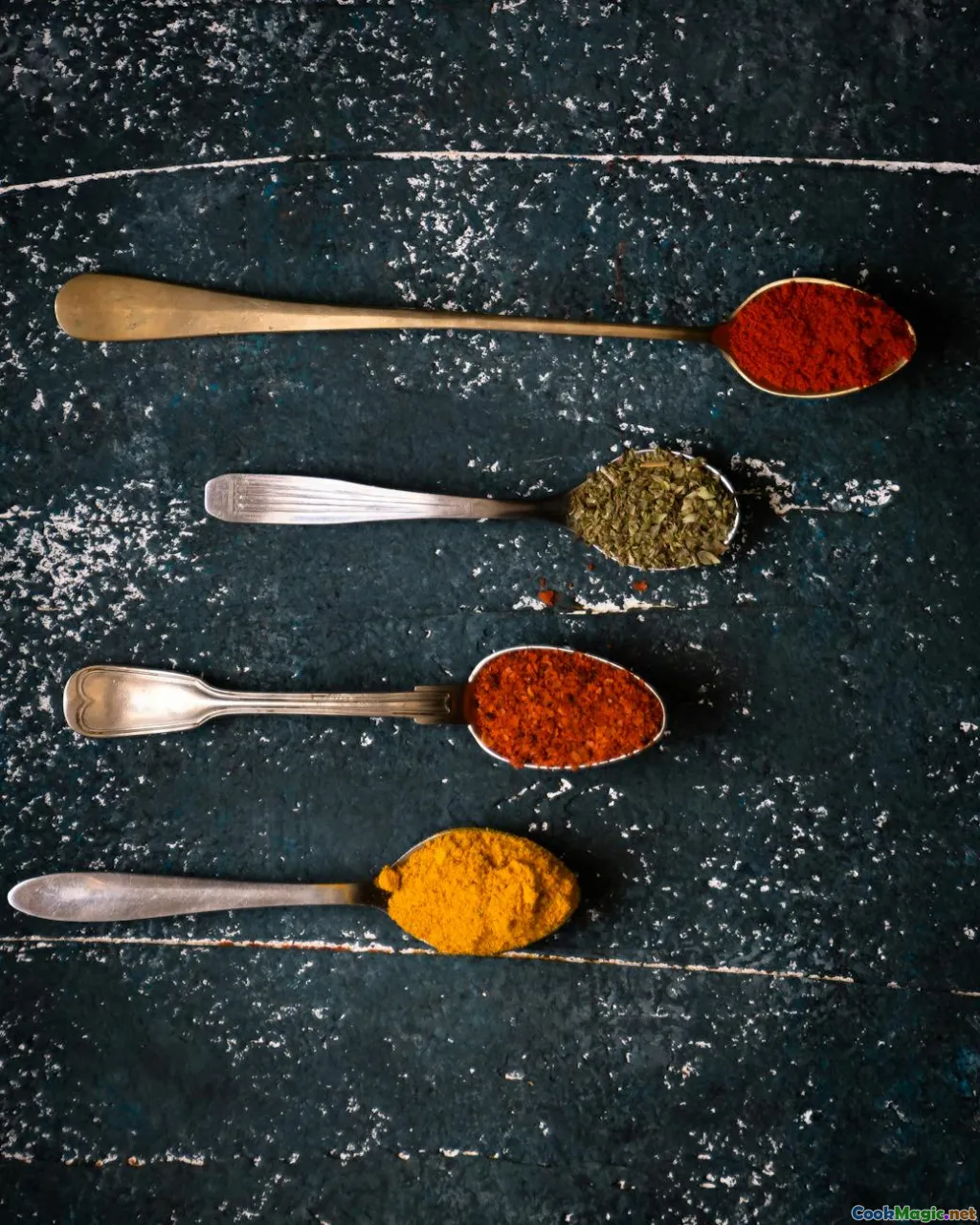
Perfect fried chicken is seasoned three times: in the brine, in the dredge, and after the fry. Each step should be confident but not trying to do the entire job. In the buttermilk, salt is non-negotiable. Add a slow burn with hot sauce—Texas Pete or Crystal are Southern staples—both for flavor and a touch of added acidity. A spoonful of honey or sugar balances tang and aids browning. In the dredge, bring the choir: black pepper for piney heat, cayenne for a focused zing, paprika for color and sweetness, garlic and onion powder for savory bass notes, and mustard powder for a faintly nose-tingling brightness. White pepper adds a peppery hum you feel in your sinuses more than on your tongue. A tsp or two of MSG is optional but effective; it deepens savor without making the crust taste processed if you balance salt correctly. Post-fry seasoning is a chance to personalize. A dusting of salt and pepper is the classic move. For a gentle hum, toss a pinch of cayenne with fine salt and a whisper of sugar and sprinkle while the chicken rests. If you want a Nashville-leaning finish, whisk hot oil or melted lard with cayenne, paprika, a splash of brown sugar, and a pinch of garlic powder, then brush it on. Your kitchen will flash red and smell like a honky-tonk at midnight.
バターミルクブライン:式と変種

A reliable base brine for 1.5–2 kg chicken pieces:
- 3 cups cultured buttermilk
- 1 cup cold water (thins slightly to maximize diffusion)
- 24–32 g kosher salt (about 2–3 tbsp Diamond Crystal; 1.5–2 tbsp Morton’s)
- 2 tbsp hot sauce (Crystal, Texas Pete, or similar)
- 1 tbsp honey or sugar
- 1 tsp smoked paprika or sweet paprika
- Optional: 2 smashed garlic cloves, a few sprigs of thyme, 1 tsp freshly cracked black pepper Whisk until the salt is fully dissolved. Add the chicken, making sure each piece is submerged. If needed, use a zip-top bag and press out the air. Refrigerate 8–12 hours for ideal balance; up to 24 if you like a little more tang and tenderness. Variations to consider:
- Pickle-juice kiss: add 2–4 tbsp of dill pickle brine. It lends salinity and a subtle herbal, garlic twang that conjures summer.
- Ranch-ish: add minced chives and dill, cracked pepper, and a hint of buttermilk powder for a green fleck and herbaceous aroma.
- Spice route: whisk in 1 tsp ground coriander and ½ tsp turmeric for a gentle citrus-earth note that plays beautifully with hot honey. When the soak is done, let the excess drip off but do not rinse. That tangy film is a glue for your dredge.
粉の力:衣、デンプン、そしてザラザラの外皮

Crust is architecture. What we crave is a topography of rugged crags that stay shatteringly crisp even as steam tries to soften them. All-purpose flour is your base. Additions make it sing. Start with a 4:1 ratio of flour to starch for the dry mix—4 cups all-purpose flour to 1 cup cornstarch. Cornstarch lowers the gluten and promotes a lighter, crispier crust. Rice flour works similarly and adds a glassy crunch. Potato starch brings a different, sometimes more brittle snap; a blend of cornstarch and rice flour yields a craveable crunch with a tender bite beneath. Season the dredge heavily. Salt should be present but not overwhelming; 1.5–2 tbsp Diamond Crystal or 1–1.25 tbsp Morton’s per 5 cups of mix is a good start. Add 2 tsp black pepper, 1–2 tsp cayenne (adjust to taste), 1 tbsp paprika, 2 tsp garlic powder, 2 tsp onion powder, and 1 tsp mustard powder. Whisk to distribute evenly, then use your hands to break any lumps. For drama: make flour pearls. Sprinkle 2–3 tbsp of the buttermilk brine into the flour and toss with your fingertips until it forms little pebbles. These hydrate just enough to stick to the chicken and fry into those crunchy, irregular boulders that catch the light and the seasoning. Dredge technique matters. Work with one hand wet, one hand dry. Lift a piece from the buttermilk, let excess drip, then bury it in your flour. Press the flour into all the nooks. Shake off the excess, dip back into buttermilk for a blink, and dredge again for a double coat that will survive a rowdy fry. Lay each piece on a rack and let it rest 10–15 minutes so the flour hydrates; a dull, slightly tacky surface tells you the crust is ready to fry.
揚げ物:温度、時間、泡のリズム
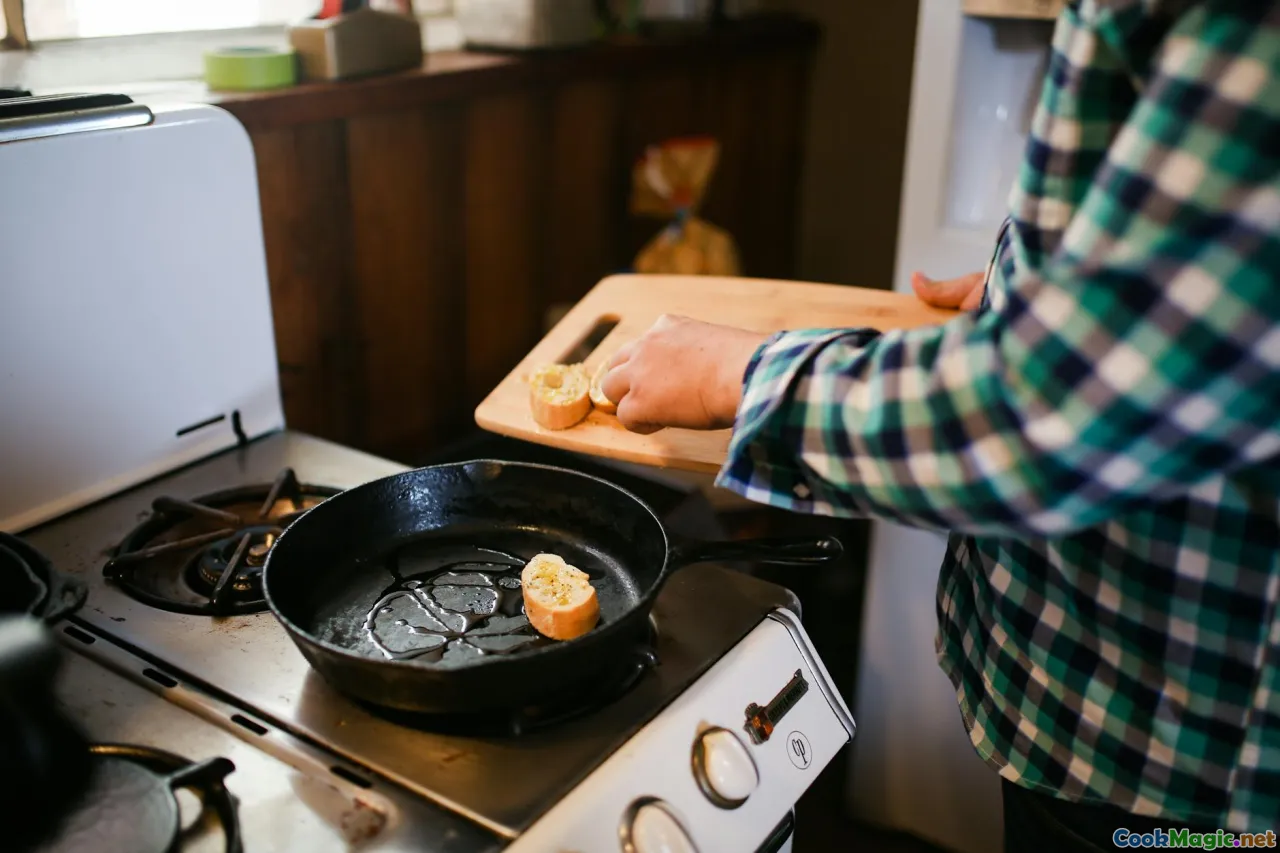
Heat your oil to 330–340°F for dark meat and 325–335°F for breast meat. Your goal is an average cook temp around 315–325°F—hot enough for a golden crust, gentle enough to cook to the bone without burning. A Dutch oven holds temperature more securely; a cast iron skillet offers that photogenic sizzle and pan intimacy with the trade-off of faster heat swings. Introduce the chicken gently, skin side down, laying it away from you so oil doesn’t splash. Listen. A joyful sizzle with a steady stream of rice-sized bubbles means you are at the right heat. If the bubbles roar and the crust browns too fast within 90 seconds, you are too hot. If the oil looks lazy and flat, bump the heat. Cook times vary by piece size and oil depth:
- Thighs and drumsticks: 10–14 minutes, flipping once halfway, or until 175–185°F internally.
- Breasts (bone-in): 8–12 minutes, targeting 160–165°F.
- Wings: 6–8 minutes. Crowding is the enemy. Fry in batches, leaving space around each piece so the oil can circulate. Between batches, skim out any floating sediment with a spider to keep the oil clean and the crust from tasting burnt. Let each piece drain briefly over the pan, then transfer to a wire rack on a sheet tray in a warm oven (250°F) if you need to hold. Resist paper towels for the final rest; they create steam pockets that soften your hard-won crust.
休ませ、仕上げ、保温:静かな秘密
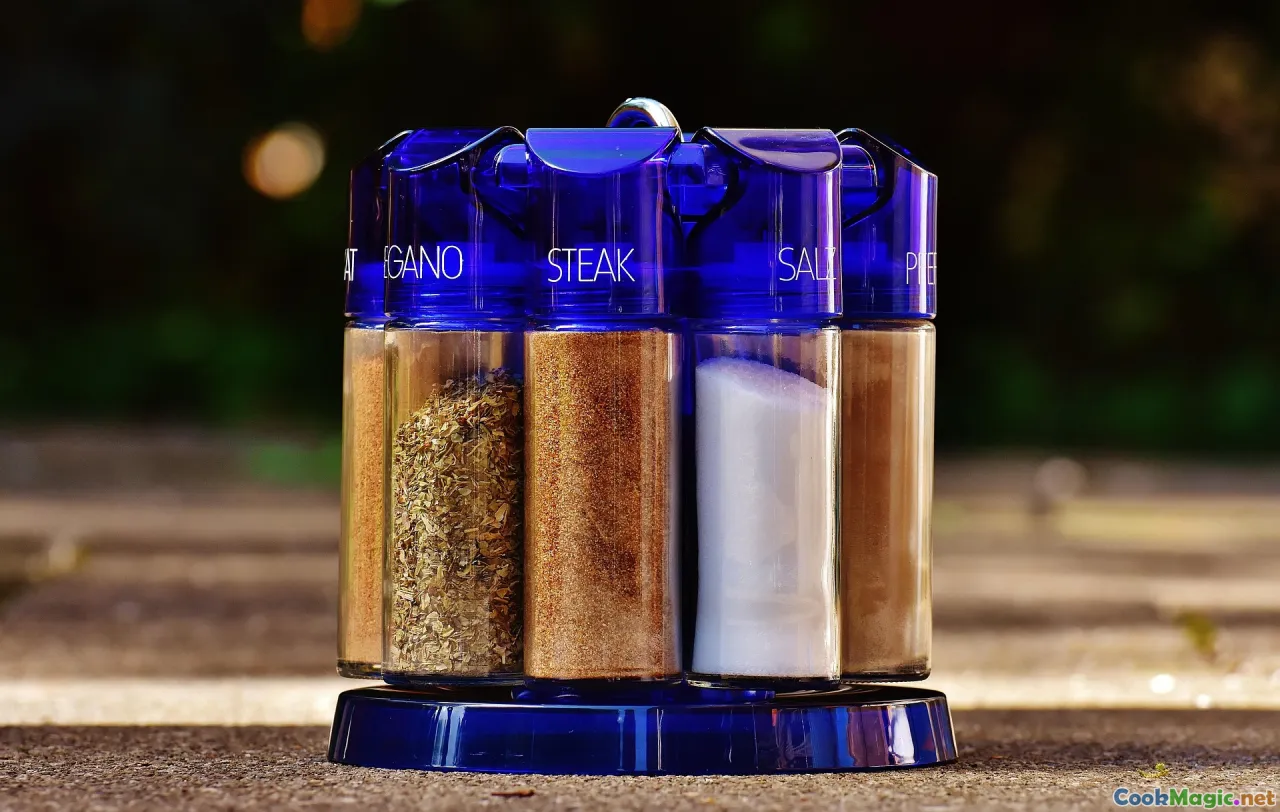
Good fried chicken has a cool-down arc. Right out of the oil, the crust is fragile and steam is racing to escape. Give the chicken 5–7 minutes on the rack before you move it. The crust will set, the juices will redistribute, and the sound—tap the edge with a fingernail—will change from soft thud to snappy click. Finish while warm. Sprinkle with a light shower of fine salt, black pepper, and a hint of cayenne-sugar if you want a whisper of sweet heat. For hot chicken, brush a warm spice paste made by whisking ¼ cup hot frying oil with 1–2 tbsp cayenne, 1 tsp paprika, ½ tsp garlic powder, 1 tsp brown sugar, and a pinch of salt. The paste should bloom brick-red and smell like a devilish candy shop. Holding is possible but imperfect. In a 200–250°F oven, chicken will stay crisp for about 30–40 minutes. After that, the crust begins to soften. If you need more time, cook the chicken to just under your target temperature and finish in the oven right before serving.
シェフのレシピ:日曜の食卓のためのバターミルクフライドチキン
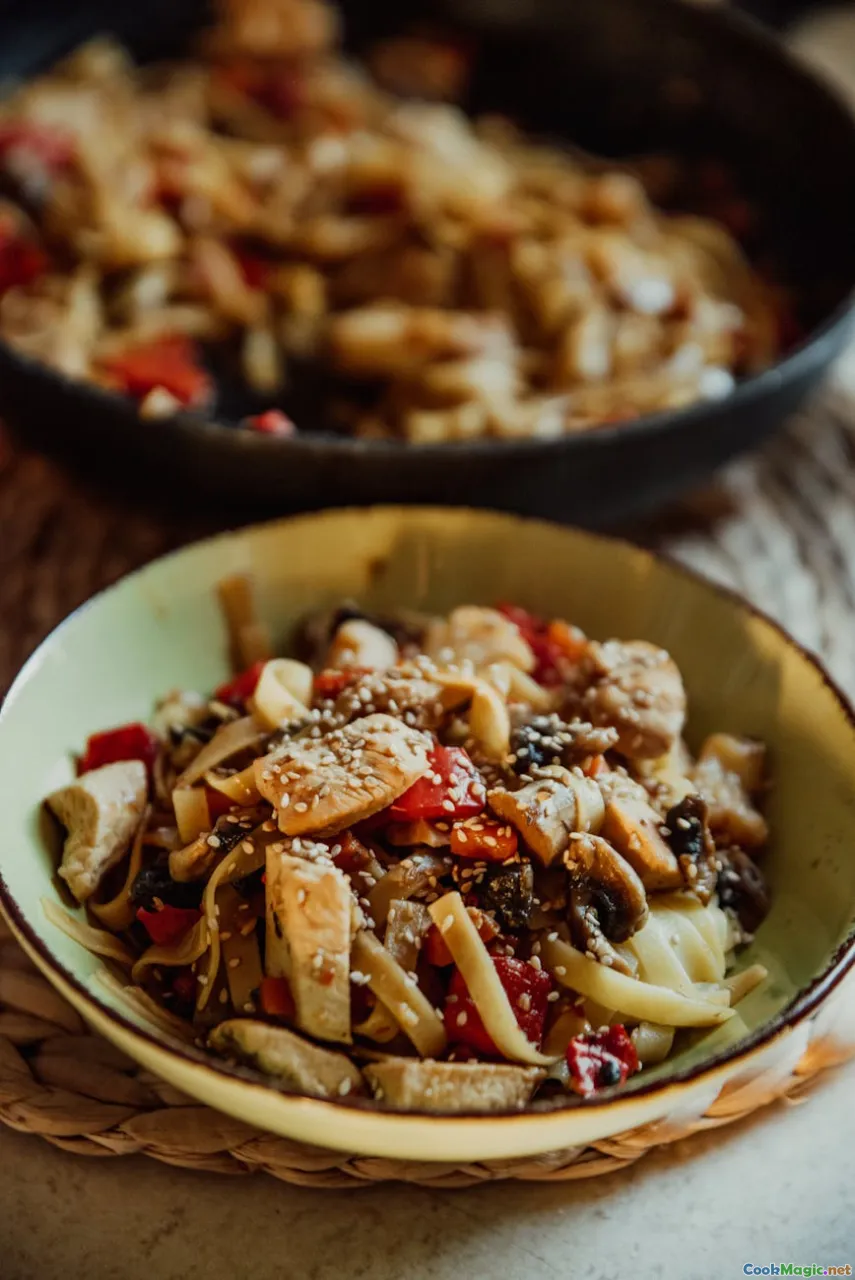
Serves 4–6 材料 鶏とブライン用:
- 1羽の丸ごと鶏(約3.5–4 lb)、10 pieces に分割(胸肉2枚を半分、もも2、ドラム2、手羽2)
- 3カップカルチャー入りバターミルク
- 1カップ冷水
- 28 g コーシャソルト(約2.75 tbsp Diamond Crystal または 1.5 tbsp Morton’s)
- 2大さじホットソース(Crystal または Texas Pete)
- 1大さじ蜂蜜または白砂糖
- 2片にんにく、潰す
- 1 tsp freshly ground black pepper 衣用:
- 4カップ all-purpose flour
- 1カップ cornstarch(または ½ カップ cornstarch + ½ カップ rice flour)
- 1.5–2 tbsp Diamond Crystal kosher salt(または 1–1.25 tbsp Morton’s)
- 2 tsp black pepper
- 1–2 tsp cayenne(to taste)
- 1 tbsp paprika(甘口またはスモーク)
- 2 tsp garlic powder
- 2 tsp onion powder
- 1 tsp dry mustard powder
- Optional: 1 tsp MSG 揚げと仕上げ:
- 1.5–2 quarts peanut oil, or a blend of peanut oil and ½ cup leaf lard
- Fine salt, black pepper, pinch of sugar and cayenne for finishing
- Optional hot paste: ¼ cup hot frying oil, 1–2 tbsp cayenne, 1 tsp paprika, ½ tsp garlic powder, 1 tsp brown sugar, pinch of salt 方法
- ブラインの準備
- 大きなボウルで、バターミルク、水、塩、ホットソース、蜂蜜、にんにく、黒胡椒を塩が溶けるまで泡立てる。
- 鶏肉を加え、完全に浸るようにする。蓋をして8–12時間(最大24時間)冷蔵。
- 衣の準備
- 広く浅いボウルで、小麦粉、コーンスターチ、塩、黒胡椒、カイエンヌ、パプリカ、にんにくパウダー、玉ねぎパウダー、マスタードパウダーを混ぜる。
- バターミルクブラインを2–3大さじ振り入れ、指先で混ぜて小さな pebbles を作る。
- 鶏肉を衣につける
- 天板の上にラックをセット。
- 1ピースずつ、ブラインから鶏を持ち上げ、余分な水分を滴らせる。衣の中へ落とし、全体を密着させて押さえる。余分を振り落とす。再度バターミルクに短時間浸し、衣を二重にする。
- ラックの上に置き、10–15分休ませる。粉が水分を取り込み、くっつく。
- 油を熱する
- 鍋は3/4–1インチの深さになるよう油を注ぐ。温度はダークミートで330–340°F、胸肉で325–335°Fに。揚げる間は平均315–325°Fを保つよう調整。
- バ Batch 揚げ
- ももとドラムスティックから始める。優しく置き、皮を下にする。詰めすぎない。
- 5–7分揚げ、ひっくり返してもう5–7分、内部温度が175–185°F、クラストが深い黄金色になるまで。
- ラックへ移し、暖かい間に仕上げ用塩をひとつまみ振る。
- 胸肉は160–165°F、手羽は175–180°Fまで揚げる。
- 仕上げと提供
- ナッシュビル風の辛味には、ホットペーストを混ぜて温かいうちに鶏肉へ刷毛で塗る。
- すぐに食べられるよう、 quick pickles、白パン、そしてお好みでホットハニーを添える。
Notes
- Oil safety: Keep the pot no more than halfway full. If a flare-up occurs, cover with a lid and cut the heat; do not use water.
- Temperature matters: Use a thermometer both for the oil and the meat. Trust the numbers over the clock.
- Leftovers: Refrigerate uncovered until cold, then cover. Recrisp on a wire rack at 375°F for 10–12 minutes.
地域の皿と霊感:メイソンからナッシュビル、ニューオーリンズへ
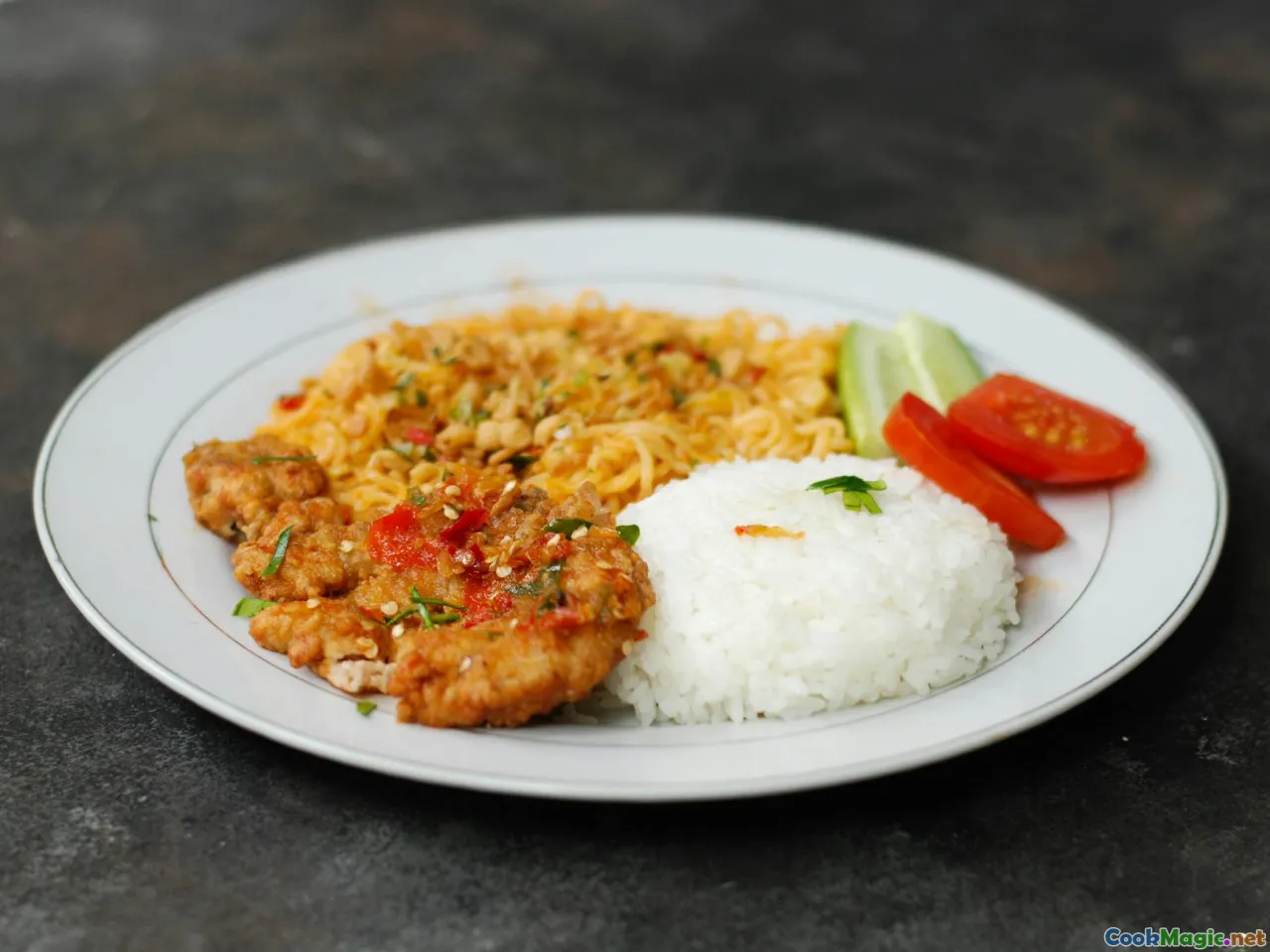
Southern fried chicken wears different accents across the region.
- Gus’s World Famous Fried Chicken (Mason, TN): カイエンヌの前面に出た風味が肉に染み込み、銅色がかったクラストとともに白パンとスローと一緒に卓へ。熱さはしっかりだが友好的で、クリスは薄いガラスのようで、ジューシーな肉へと割れていく。
- Prince’s Hot Chicken (Nashville, TN): ナッシュビルのホットは揚げた後の啓示。辛味油と香辛ペーストの粘りが赤く色づき、煙と胡椒の香りが空間を満たす。ピクルスと白パンとともに出され、波のように刺さり刺さる。
- Willie Mae’s Scotch House (New Orleans, LA): クラストは音で崩れそうなくらい壊れやすいが、実際には不思議と柔らかく、味付けは中まで染み渡る。香りは自信に満ちていて、一口ごとにまた次を欲する。 家で作るときは、ブラインのまわりで自由に混ぜ合わせられる。鶏のバターミルクにナッシュビル風のペーストを塗ってもよいし、カイエンヌをパプリカとブラウンシュガーで和えて丸みを出してもよい。Gus’s の衣の比率をカイエンヌのパプリカ比に高め、白胡椒をひとさじ加えると風味が引き締まる。あるいは香辛料を穏やかにして、バターミルクの酸味を主役にしてレモンのくさみで口当たりを明るくする。
付け合わせ、調味料、対比の愉しみ

フライドチキンは対比を愛する。熱と冷、サクサクとクリーミー、甘さと鋭さ。
- ビスケット:オーブンから出た直後に割って蒸気を逃がし、クラストを層状に保つ。とろけるバターとソルガムシロップまたは蜂蜜を少量塗ると、皿の上がさらに香り高くなる。
- コラードグリーン:スモークターキーでじっくり煮る。ハムだけでなく、清らかな燻香を出して鶏の風味を濁らせない。仕上げにリンゴ酢を少々加えると煮汁が活きる。
- スロー:緑と紫のキャベツを薄切りにして、バターミルク、Duke’s マヨネーズ、リンゴ酢、砂糖、セロリエードで和える。鶏と冷たい状態で合わせられるよう、しっかり冷やす。
- 速漬け:きゅうりの輪切りを米酢、砂糖、塩に漬け、ディルと粗挽き胡椒をたっぷり。涼やかで酸味と歯ごたえがあり、脂を切り裂く。
- ホットハニー:蜂蜜を温め、カイエンヌを少々、リンゴ酢を少し、バターをひとつまみ加える。手羽に垂らして一口ごとに驚く表情。
- 白パン:派手さは不要。一枚を下に敷くとスパイスペーストと鶏の滴を受け止め、静かな一皿として完成する。 ソースには賛否がある。純粋主義者は塩だけを求める。別の人は酸味のあるディップを望む: Alabama White Sauce(マヨネーズ、酢、ホースラディッシュ、黒胡椒)は、最も良い意味で翼を刺激する。テーブルのCrystal のボトルは、熱の刺激を一口ずつ調整できる。
比較:スキレットでの揚げ vs. ダッチオーブン vs. エアフライヤー
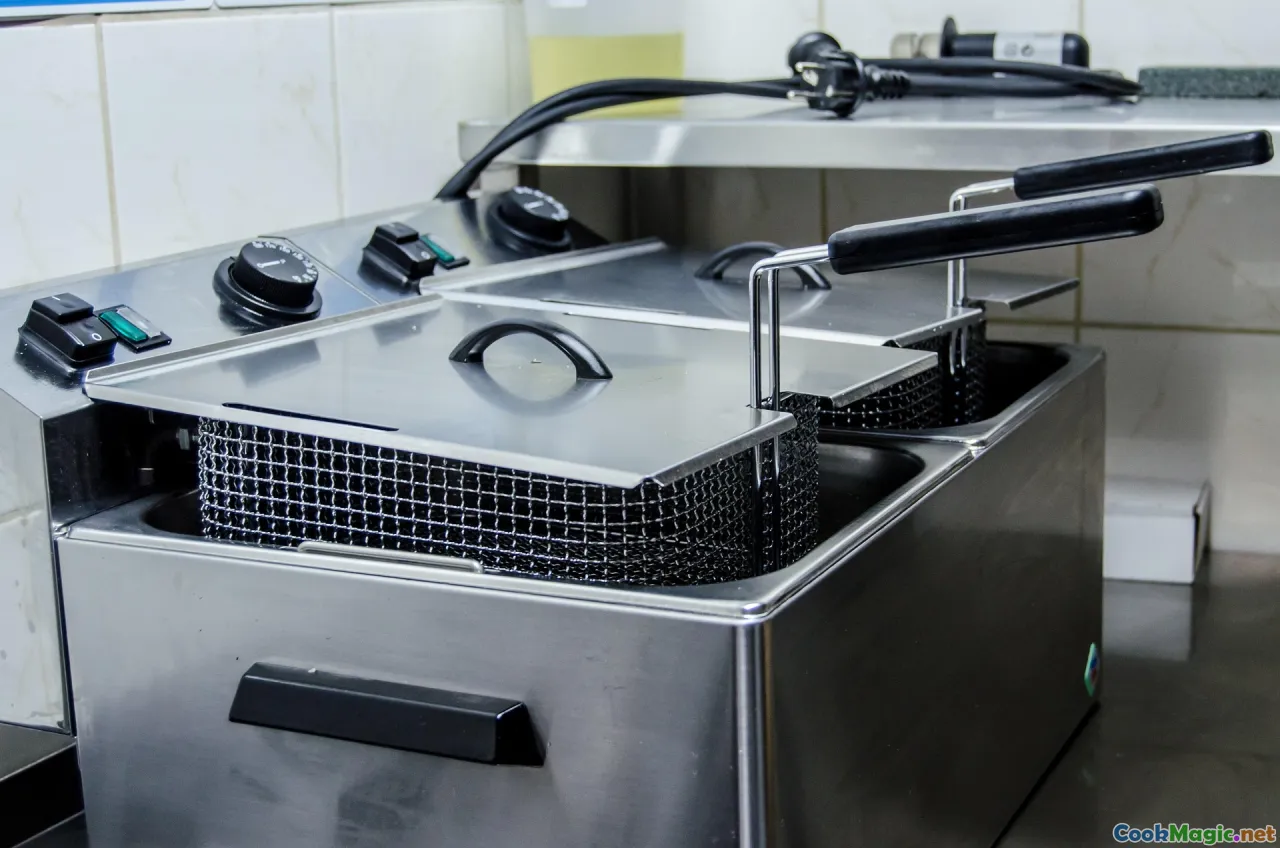
- スキレットでの揚げ(浅い揚げ):最も伝統的。油のラインと空気が接するところにクラストのコルヌーヌを得られ、色を一目で監視できる。熱の振れはより大きく、注意が必要。
- ダッチオーブン(深い揚げ):熱の安定性が高い。ピースはより均一に焼け、多少大きめのバッチも可能。クラストの質感はやや均一で、端のゴツさは少なくなる。
- エアフライヤー:便利で清潔。予熱と油を少量だけ使うことで良い焼き色は得られるが、油の浴びが少ない分、風味は本物の揚げ物の深さに欠ける。平日には良い代替手段だが、日曜日の味を置き換えるものではない。 flavor が king なら、スキレットかダッチオーブンが勝つ。便利さが queen なら、エアフライヤーは友好的な王冠を被る。特に余り物を再加熱してシャキッと戻す場合には。
小さな台所の科学:出来上がりの音と香り

感覚は道具だ。 moisture が減るときの音を聴く。音の高低は、焼き上がりへと近づくと下がってくる。縁の深い黄金色を眺め、薄い砂色よりも焼き上がりを読み取る。油の匂いを嗅ぐ。清潔な油は温かい落花生の香りや甘いトウモロコシの香りがする。暗く刺さる匂いは焦げた粉の断片を示し、すくい取るべきサインだ。 温度計は必須だが、数字が180°Fを指していても、感覚がもう一分ほど必要だと感じる場合は、両方を聞く。関節の部分を刺して汁が透明かどうかを確かめる。重量は鶏肉の感触を教えてくれる。生の鶏は重く湿っているが、火が通った鶏は均衡が取れ、手首には軽さがある。
南部の道のりからの私的ノート

ジョージア州の小さな町で、ふたりのダイナーが対立するいとこ同士のように向かい合っていた光景から、私は大切な教訓を学んだ。片方では、料理人が冷蔵庫から直接衣をつけ、ブラインしたばかりの鶏を氷のように冷たい粉に落とす。クラストは見事に固まったが、特に胸肉は後から追いつけず、骨の近くに薄い線が残った。通りを挟んだ向こうでは、ダイナーがブラインから取り出して衣をつけ、油の前に室温で15分休ませる段取り。入れるときのクラストは派手さは少ないが、出てくるとステンドグラスのようなひび割れが現れ、肉は急がず中まで火が通っていた。 バーミンガムでは、ラインクックが母親のような丁寧さで粉の小石を作るのを見た。霧をボウルに吹きかけ、サラダのように混ぜれば、粉は月の隕石のように見えた。彼はそれがおばさんのセルマのコツだと言った。ニューオーリンズでは、最初のバッチを返すとき、火力をささやく程度に下げた。部屋にはナッツのような茶色いバターと煙の香り。色は深く、怒鳴るようなヒス音はなく、 calm に見える中で支配が感じられた。 そして私の祖母の台所にはルールがあった。最初のウィングは、台をセットした人へ。そんな儀式が食事を記憶へと縫い合わせる。バターミルクフライドチキンは、小さな儀式の皿であり、それらが集まって食欲以上のものを生み出す。
大人数のための拡張のヒント
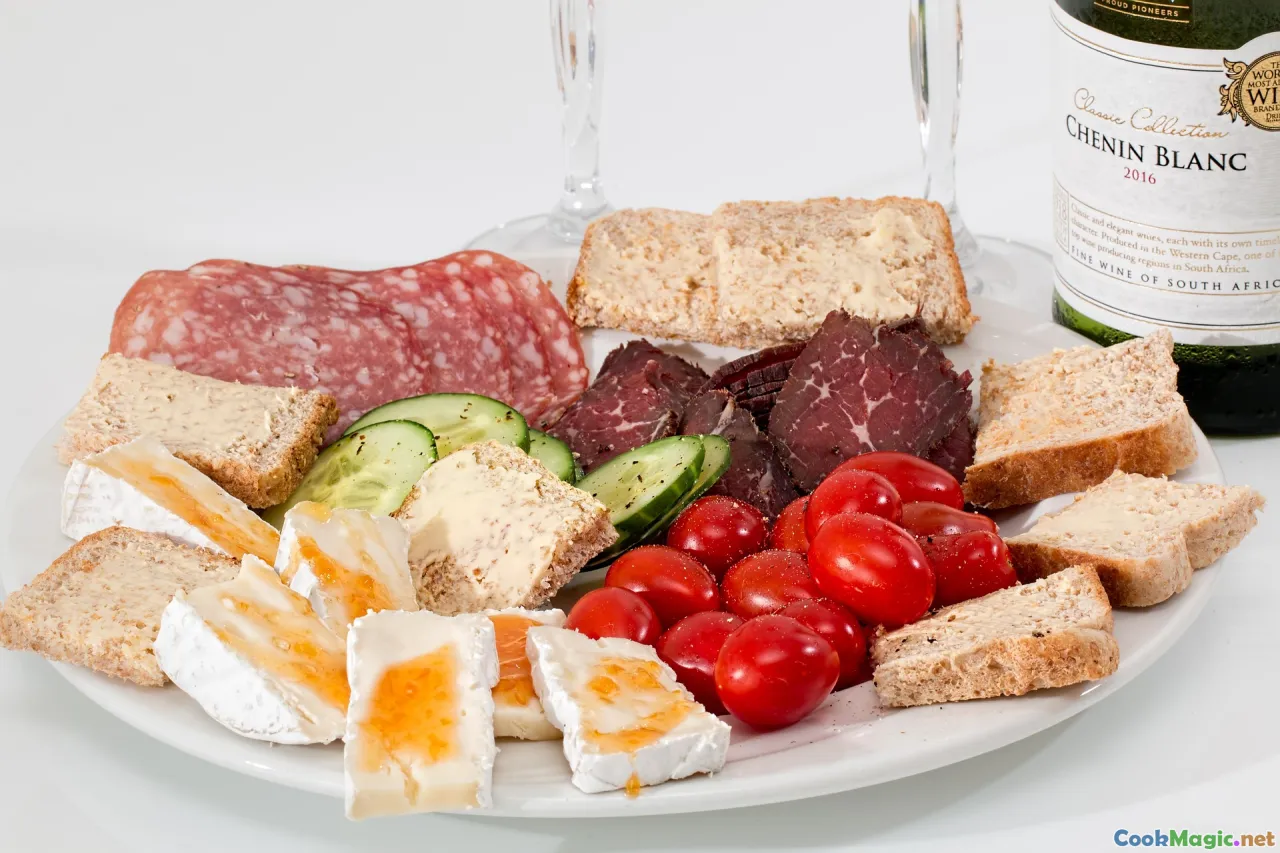
- 思っているより多めの衣を作る。粉はダマつきやすく油っぽくなる。提供中にボウルを半分程度リフレッシュする。
- もしスペースがあれば、二つのステーションを設ける。片側に衣とラック、もう片側に揚げとラック。清掃と加熱済みのエリアを分けておく。
- ダークミートを先に揚げる。保つ力が強い。胸肉と手羽は最後にしてジューシーさを最大化。
- オーブンを媒介として使う。仕上がった鶏をラックで225–250°Fの温度で保ち、トレイを回して各ピースが長時間オーブンに居続けないようにする。
- 仕上げ用の調味料を振りかけ容器に用意して、迅速に動けるようにする。ホットペーストはコンロの温かい場所に置いて、注文ごとに塗る。
- ソースをかける場合は、盛り付け直前に。ソースをかけるとクラストがすぐ柔らかくなる。
伝統を尊重しつつ自分のものにする

最高の南部の料理人が、フライドチキンを再発明する話題に眉をひそめる理由がある。敬意のない再発明は、痕跡を消されるように感じられる。しかし、料理は生きた芸術だ。手と選択を通じて呼吸し、耳を傾けることで成長する。 もし香辛料ペーストに韓国の gochugaru を少し足す、あるいは衣に garam masala のささやかな香りを加えるなら、自分が何を追っているのかを問うてください。答えが風味であり新規性ではないなら、アイデアの背後にある鶏の味をまだ感じられる。伝統の骨組み—柔らかさと味付けのブライン、しっかりとしたクラスト、熱の配慮、適切な休ませ—を保てば、古い家のポーチを建て直すことなく支えることができる。 Edna Lewis は、浅い鍋で春鶏を揚げ、皮が光る盾となるまでひっくり返しながら脂を塗ると書いた。彼女の言葉を読むと、フライドチキンは技術とケアの両方だと感じる。その精神こそ守るべきだ。
最後の一皿と静かな余韻
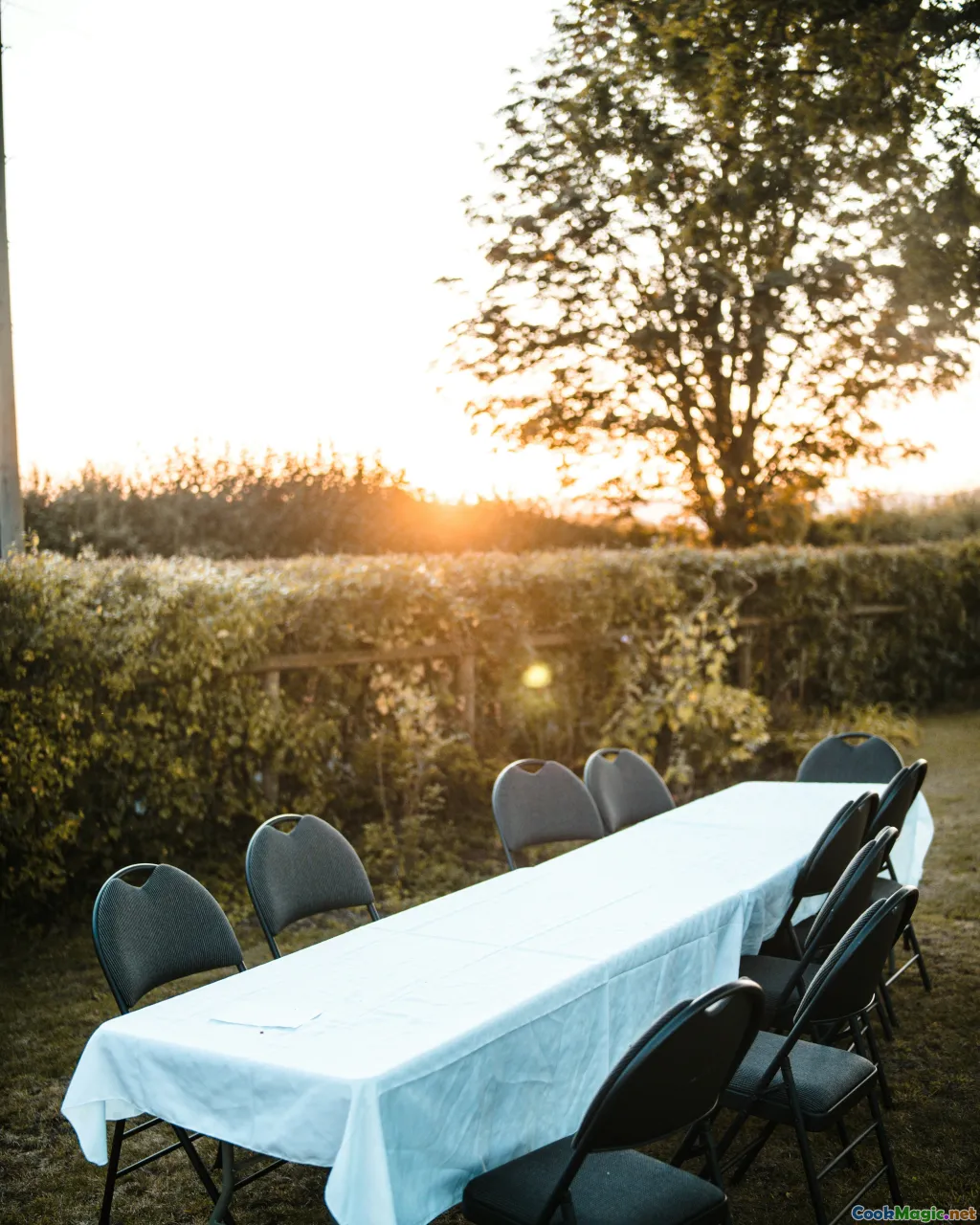
最後のバッチが出てくると、熱くて指が焼け、クラストが板の上をキャラメルの薄殼のように砕け散るのを、すぐに食べたくなる衝動に駆られる。もう少しだけ待つ。ビスケットを回し、蒸気で顔を曇らせるコラードをボウルへと注ぎ、ホットソースのボトルを休戦旗のように置く。すると鶏をテーブルに置いて、起こることを見守る:会話は前のめりになり、手は宙をさまよい、匂いが家の香りを語ると誰かが笑う。 かじると、パリッとした音が、ため息へと変わる。ペッパーのざわめきの下で感じる乳酸の風味、茶色いクラストの甘さと肉汁の savory の洪水、油から立ち上る煙の淡いささやき。これこそが完璧なバターミルクフライドチキンの技だ—科学と記憶、忍耐と食欲の会話。熱が柔らかさを教え、ただの鳥が日曜日にふさわしいものへと変わる。テーブルが静まり、歯の下のひび割れだけが残るとき、あなたは自分のスキレットの言葉で物語を正しく伝えられたと知るのだ。









